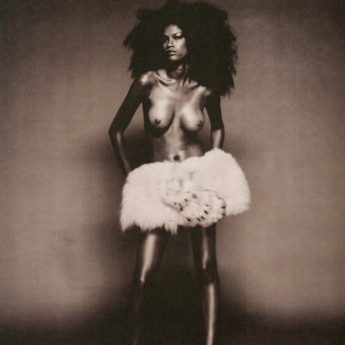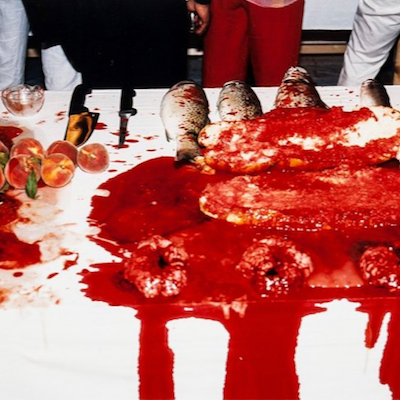
Details
Artist
Styles
No Title, printed mixed media in colour, signed, dated hermann nitsch 2012, inscribed with H/C, 107 x 76 cm // Hermann Nitsch’s Ohne Titel (orange and yellow) from 2012 combines etching and aquatint to create a powerful abstract composition. Dominated by intense hues of orange and yellow, the artwork features intricate black and blue lines that form chaotic, almost web-like patterns over a bold color field. The underlying grid hints at structure, but the expressive, splattered layers of paint disrupt any sense of order, embodying Nitsch’s fascination with visceral experience and emotional release. This piece exudes energy and tension, inviting viewers to engage with the primal and unpredictable nature of color and line.
Ohne Titel (orange and yellow), 2012
form
Medium
Size
107 x 77 cm
- Inches
- Centimeters
Edition
Price
Details
Artist
Styles
No Title, printed mixed media in colour, signed, dated hermann nitsch 2012, inscribed with H/C, 107 x 76 cm // Hermann Nitsch’s Ohne Titel (orange and yellow) from 2012 combines etching and aquatint to create a powerful abstract composition. Dominated by intense hues of orange and yellow, the artwork features intricate black and blue lines that form chaotic, almost web-like patterns over a bold color field. The underlying grid hints at structure, but the expressive, splattered layers of paint disrupt any sense of order, embodying Nitsch’s fascination with visceral experience and emotional release. This piece exudes energy and tension, inviting viewers to engage with the primal and unpredictable nature of color and line.
- Recently Added
- Price (low-high )
- Price (high-low )
- Year (low-high )
- Year (high-low )
Hermann Nitsch
Das Sechstagespiel Des Orgien Mysterien Theaters, 1998
Limited Edition Print
Etching
EUR 1,750
What is actionism?
Viennese Actionism was a short-lived but intense art movement in the 20th century, emerging as part of the broader action art efforts of the 1960s. Known for its violent and provocative performances, the movement sought to break traditional art boundaries. Key figures in this movement included Arnulf Rainer and Hermann Nitsch.

























